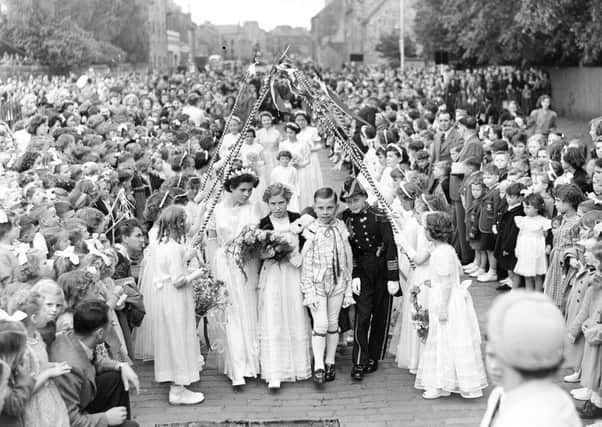In pictures: Remembering Scotland's great gala days


Originally, the events were often held to mark successful wins for workers’ rights or simply to raise some cheer in the country’s industrial communities during tough economic times.
Kings and Queens, brass bands, crowns, decorated floats and rousing speeches were pivotal to proceedings.
Advertisement
Hide AdAdvertisement
Hide AdIn the run up to the day, streets were decked with bunting and flowers with the selection of the Gala Queen, usually the prettiest girl in the town, was a much anticipated occasion.
Scotland’s first gala day is thought to have been held in the 1770 in Loanhead, when miners from the Dryden Colliery were invited to feast with their children to celebrate the birthday of the landowner, Lord Lockhart of Carnwath.
From there on, sports days and children’s play days would be held at individual collieries, given workers and their families often cut off from larger summer festivals in towns and cities, according to the National Mining Museum Scotland.
It was in the mid 1800s that gala days were held to celebrate the might of the workers’ movement and their successes in securing better pay and conditions for staff – and not just in mining.
Advertisement
Hide AdAdvertisement
Hide AdIn Paisley, Sma’ Shot Day is still celebrated to mark the victory of town weavers to get paid for ‘the sma’ shot’– the thread that bound the weft and warp threads of the famous shawls.
Because the sma’ shot was not seen on the garment , manufacturers would refuse to pay for it with weavers buying the thread out of their own pocket.
In 1856, the first Saturday in July, a traditional holiday for the weavers was renamed Sma’ Shot Day in honour of the worker’s victory.
In 1871, a gala day was organised in Kirkcaldy to mark the major achievement of the Union Board of Fife securing an eight-hour working day for miners.
Advertisement
Hide AdAdvertisement
Hide AdIn 1953, the Scottish Miner’s Gala Day at King’ Park, by Holyrood Palace, Edinburgh, is believed to be the biggest event of its kind on record. More than 100,000 people took part with the procession led from the Royal Mile by Aneurin Bevan MP.
Dr Dan Coughlan, curator in textiles at Paisley Museum, said: “Gala days were much a family thing. I would imagine the day would be a great relief to them. They would work long days, wouldn’t be able to get a day off so for them to have this one day away would have been a huge thing.”
